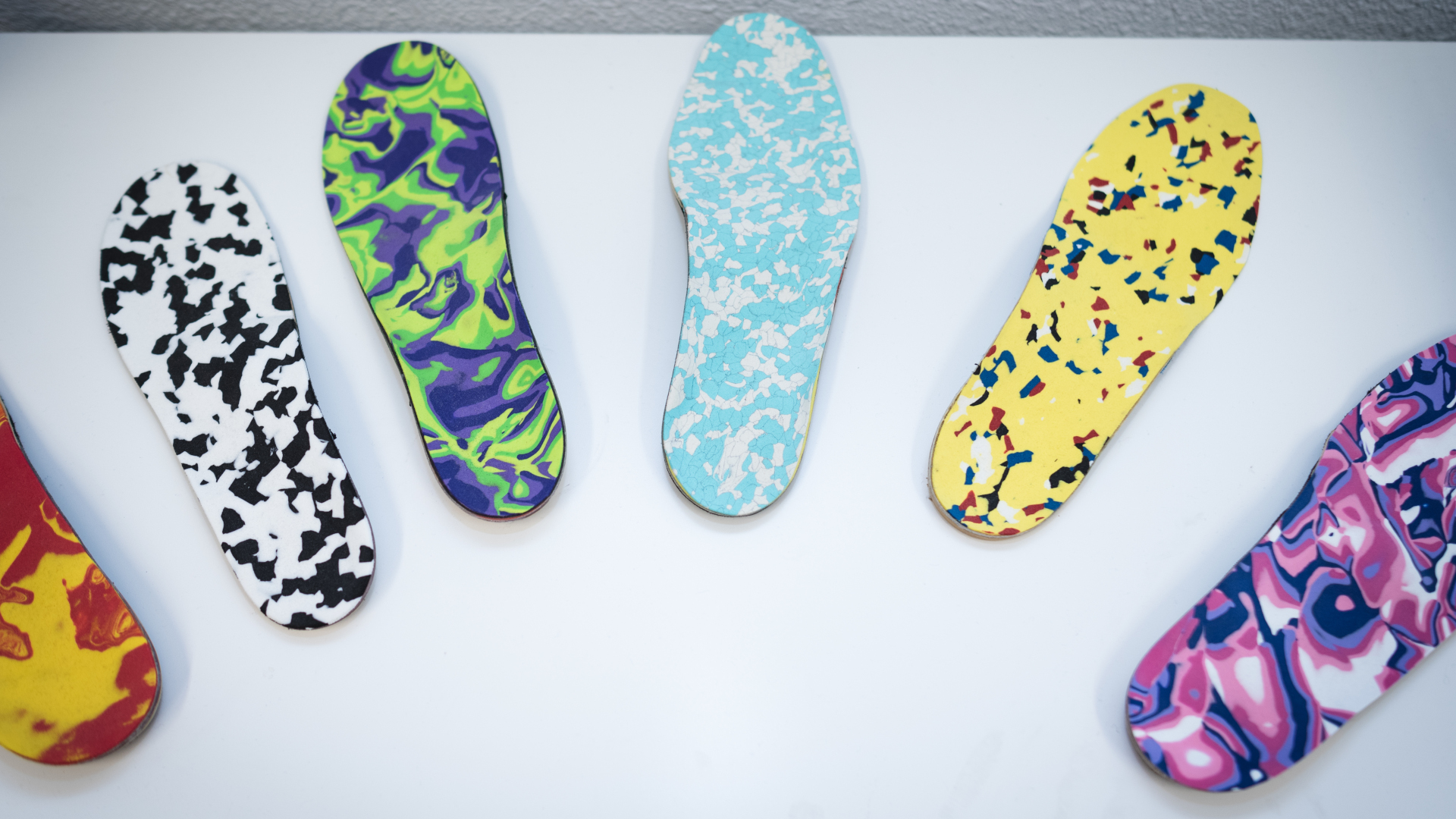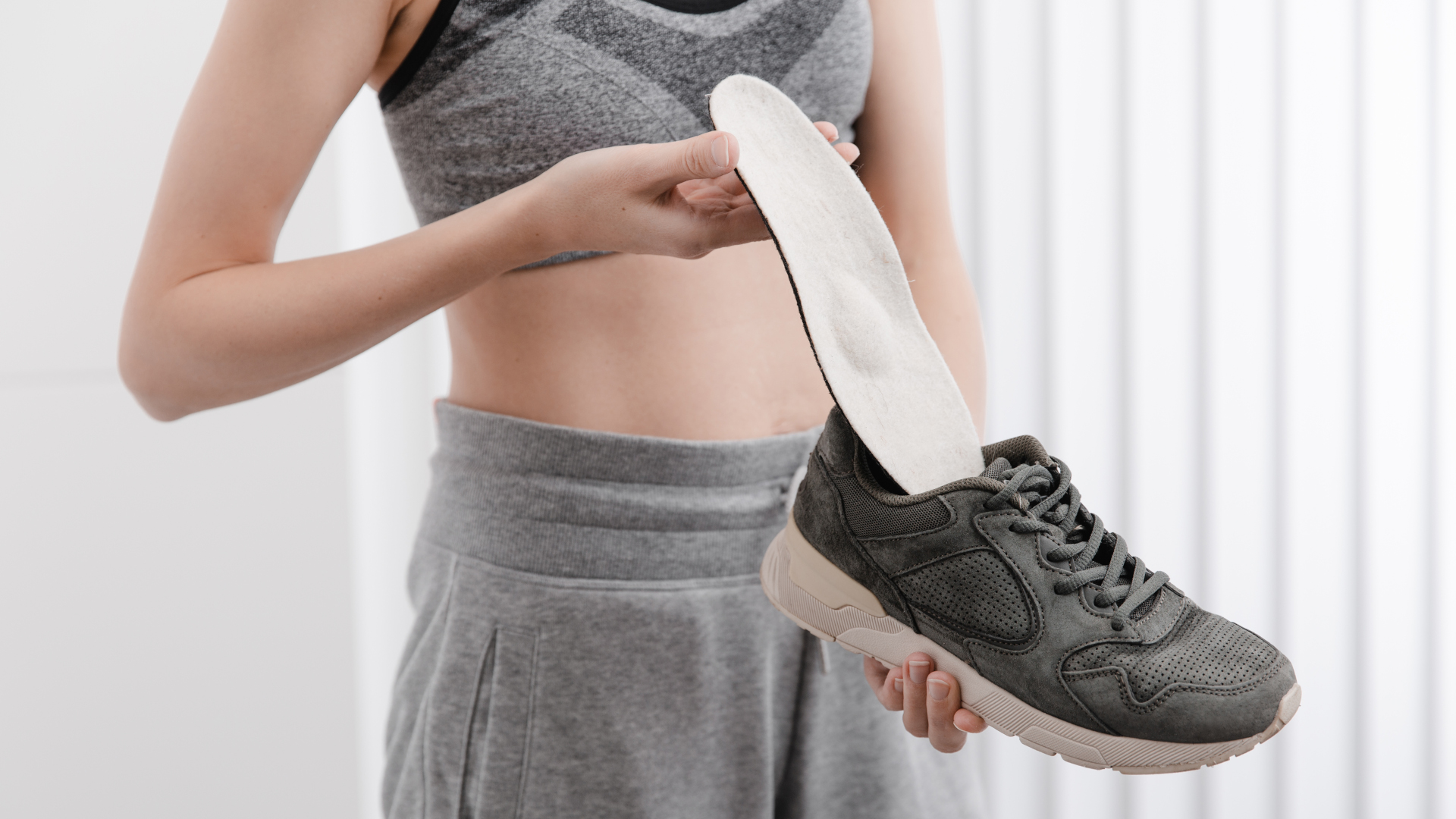Do you really need running insoles?
We take a look at the benefits and myths of running insoles to help you decide if you need to add a pair to your running kit

Running insoles are everywhere these days, promising everything from massaging capabilities to improved running performance, but what are they anyway and do you really need them? We take a look at the benefits and myths of running insoles to help you decide if you need to add a pair to your running kit, or if your best trail running shoes are providing all the support you need.

Running insoles: what are they?
A running insole is a removable insert that is sold separately from your running shoes to provide cushioning and, often, varying degrees of arch support while you’re running. Running insoles are different from both the removable sock insert which comes with your shoe and provides a simple layer of protection between your foot and the upper part of the sole, and from orthotics, which are custom-made medical devices that are podiatrist-prescribed to help relieve pain and treat foot conditions.
Running insoles may provide the following benefits:
- Arch support for those who overpronate (how much support depends on the insole, however).
- Cushioning, which can reduce pain and absorb shock.
- Improved shoe fit by filling space inside your shoe.
Because running insoles can absorb shock, they may reduce some pain associated with running and could offset stress conditions like shin splints. However, if you have a foot condition, such as plantar fasciitis or other issues caused by your foot structure or running gait, running insoles won’t help and you should get a gait analysis or consult your doctor about orthotics or stability shoes.

Do you need running insoles?
If you’re shopping for a new pair of running shoes, you might well find that the shop assistant suggests you also purchase a pair of running insoles, which gives the impression that they’re essential kit for all runners, but the truth is that if you’re not experiencing any pain or discomfort as a result of your running shoes, there’s no reason to spend the extra money.
The following are some reasons why you might want to consider running insoles:
- You’re looking for more arch support.
- You’re looking for more cushioning.
- Your foot tends to move around inside your shoes, causing rubbing or blisters.
- You like the way they feel.
Typically, running insoles will come in a range of shoe sizes and you will buy a pair that you can cut with scissors to fit your running shoe. Anyone can buy running insoles as they’re not medically prescribed, and they can range in price from under $10 ones that you can pick up at the pharmacy or grocery store to upwards of $50 models available at running stores.
Advnture Newsletter
All the latest inspiration, tips and guides to help you plan your next Advnture!

Do insoles make you run faster?
Naturally when you’re springing for some new running kit, you want to know if it’s going to make you run any faster or better. Because some insoles can stabilize your foot by filling your shoe and may provide arch support, it’s reasonable to think they might improve your running, but the truth is that they won’t change your running gait and in fact, a 2016 study published in Scientific Reports suggests that they might do the opposite –by restricting your arch, insoles might actually make your running less efficient to the tune of 6%. So if your arches are causing you pain, it might be worth using running insoles, but if not, they’re not really a problem.

How long do running insoles last?
High end running insoles can cause you half as much as a good pair of running shoes, so it’s fair to want to know how long they’ll last. After all, they’re going to take a lot of wear, tear and sweat on the trails. The recommendations for running insoles are to change them out as frequently as you replace your running shoes, since you’ll be wearing them for the same amount of time. This means that there isn’t a set expiry date on your running shoes, but they’ll respond to how many miles you’re putting on them as well as factors such as your weight and gait.
- Best trail running shoes: footwear for speed on technical terrain
Julia Clarke is a staff writer for Advnture.com and the author of the book Restorative Yoga for Beginners. She loves to explore mountains on foot, bike, skis and belay and then recover on the the yoga mat. Julia graduated with a degree in journalism in 2004 and spent eight years working as a radio presenter in Kansas City, Vermont, Boston and New York City before discovering the joys of the Rocky Mountains. She then detoured west to Colorado and enjoyed 11 years teaching yoga in Vail before returning to her hometown of Glasgow, Scotland in 2020 to focus on family and writing.

